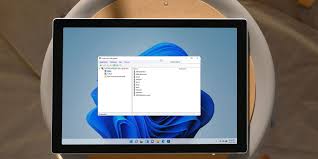Docker is an essential tool for easy installation of the apps running your sites and services, and with docker-compose it’s even easier to manage.
Some projects don’t come with docker-compose files, and it takes time to build it yourself. docker-autocompose can generate a working docker-compose file from any running Docker container.
Some Docker apps don’t have compose files
Docker is an open-source platform for deploying applications in bundled components known as containers. Using Docker, you don’t need to worry about dependencies or interactions between services as these are usually pre-configured to some extent.
You can use Docker to deploy apps to specialized servers, Linux distros, or including custom images. Running apps with Docker is relatively easy and can ensure you always have the latest software versions.
If you’re not familiar with the concept of Dockerized apps, you should read our essential guide on why you should use Docker instead of virtual machines.
Docker commands are long and usually all associated variables are executed as a single command. They’re awkward to input, and although you can add an alias to your .bashrc file, it often comes down to repeatedly hitting Ctrl+R to find the exact Docker command.
Docker Compose is a tool to help you with cross-container interaction and orchestration. It’s so effective at helping you manage Docker containers that many users don’t learn to use Docker at all. Why would you do that when all you need to do is download a YAML file, and bring it up with a simple two-word command?
While many apps that can be deployed by Docker have compose files, not all do, making it difficult for quick, clean Docker installations and deployments. This is especially common with apps on less mainstream hardware like ARM64 and ARMhf.
If you prefer to use docker-compose over raw Docker, you can choose not to use a particular part of the software if the project’s GitHub repository doesn’t have a handy docker-compose.yml .
docker-autocompose makes it easy to automatically generate a compose file
docker-autocompose is a Python app that can generate a working compose file from any running Docker container.
It means you need to run only docker command first then take generated output and start app using docker-compose in future, or you can add to existing compose file to manage all your services at once Huh.
How to install docker-autocompose on Linux
Since docker-autocompose comes as a Python app, you will need to have Python PIP installed on your Linux system.
Use docker-autocompose to create compose files
Often, when searching for essential Linux apps, you’ll stumble across a hideous project that comes with Docker images but without any files. An example of this is the excellent browser-accessible IRC client, Dispatch.
In this case, the container name is dispatch, and the container ID will appear as output in your terminal immediately after running the docker command.
Create working compose files immediately from running docker container
Docker and Docker Compose are an increasingly important part of the Linux app ecosystem and are proving especially valuable for self-hosting sites and services on the ubiquitous Raspberry Pi single-board computer.
If you haven’t started your journey towards building your own online ecosystem, you should take a look at some of the best web-facing projects you can run on the Pi.
The Raspberry Pi is a single board computer – built for a price but capable of high performance and performing tasks that you might more easily associate with a server farm or data center.
Today, self-hosting web-facing applications and services is a popular hobby, and this article will show some of the best to deploy on a later model Raspberry Pi.
Why use Raspberry Pi for self-hosting?
You can build a home server on practically any computer hardware manufactured in the last 30 years, but the Raspberry Pi has the advantage of super-low power draw. Even the more recent Raspberry Pi 4B (the model we’d recommend for most of these projects) consumes less than 3W at idle and about 7W under load—roughly the same as an energy-saving lightbulb Is.
The 15-year-old gaming PC you take out of storage to act as a server probably consumes upwards of 600W. As servers are usually left on 24/7, this represents a huge power saving.
Performance-wise, the Raspberry Pi 4B is a beast of a machine in a miniature form, and features a quad-core Cortex-A72 64-bit processor running at 1.5GHz (if you don’t overclock it), Gigabit Ethernet, four USB ports, and between 1GB and 8GB of built-in RAM. Although prices for Raspberry Pi hardware are currently high, under normal circumstances, they would retail for around $35.





